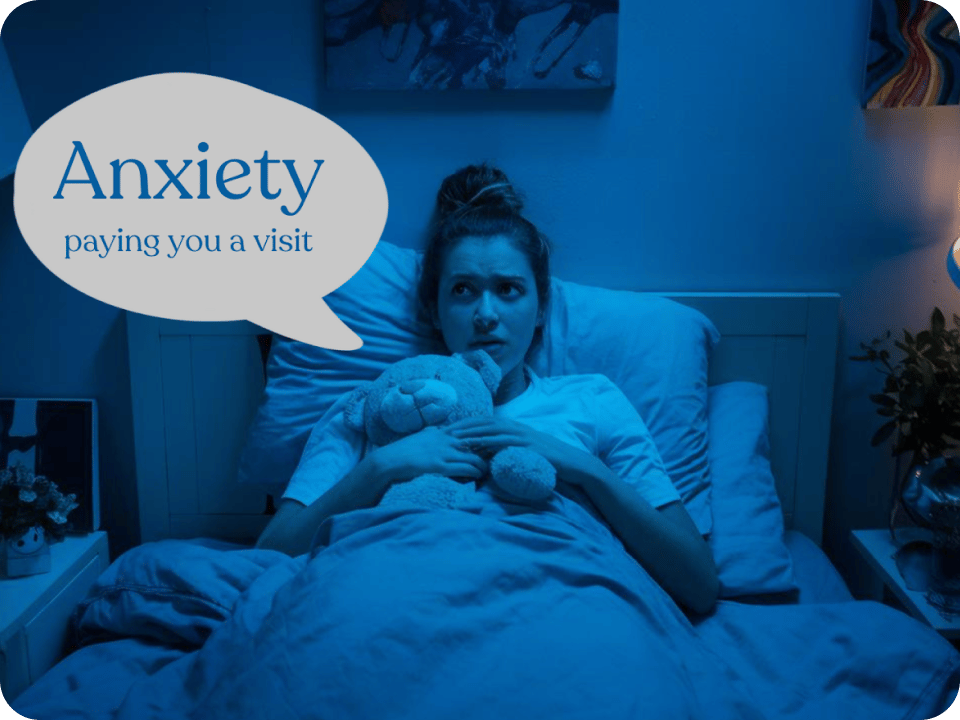🤯 Why Fighting Anxiety Backfires
🔍 The Real Culprit Chronic Anxiety: Secondary Fear
💡 Sol Bites: How to Make Anxiety Safe
✅ Your 60-Second Reset
📹 Video Bite: Robin Richardson on Anxiety Explained
🦉 Words of Wisdom
Welcome to Wisdom & Sol, and hello to the 1,335 people who have joined us from last week! If you're not a subscriber, become part of our community of 80,612 intelligent, curious people who want to improve their emotional well-being by subscribing here.
Why Fighting Anxiety Backfires
Picture your brain as a hyper-vigilant security guard. Its job: Keeping you alive. It scans for threats 24/7—snakes, cliffs, overdue bills, that weird email from your boss. When it spots danger, it sounds the alarm with a hit of adrenaline. As a result, your heart races, palms sweat, thoughts spin—in other words, you now have anxiety. It’s useful in a jungle, but annoying during a meeting with your boss.
Here’s what most people get wrong about that situation: They think the alarm is the enemy.
The reality is that you don’t have “public speaking anxiety” or “health anxiety” or “relationship anxiety.” You have one anxiety system with different triggers. The label doesn’t matter. The mechanism does.
The Real Culprit Chronic Anxiety: Secondary Fear
Worrying about anxiety can cause you more problems than having actual anxiety. Let's take a look at why:
You’re triggered by an occurrence → your brain yells “Danger!” → adrenaline floods in.
You feel the rush and think, “Oh no, I know that feeling. What if I can’t handle it?”
A second alarm goes off—this time, the “danger” you’re being warned about now is the feeling.
Your brain learns that anxiety is a threat you need to avoid.
Next trigger? You’re hit with double adrenaline, a louder alarm, and a bigger spiral.
(e.g., presentation, restless night)
Brain yells "Danger!" → Adrenaline floods in
"Oh no, I know this feeling! What if I can't handle it?"
"The *feeling* of anxiety is a new threat!"
Double Adrenaline! Louder Alarm!
NEXT TRIGGER HITS HARDER
(Loop repeats and strengthens)
This is compound anxiety. It’s why a tiny worry about a presentation turns into a week-long panic. It’s why one restless night becomes a sleep obsession. It’s why “just relax” never works.
Your brain isn’t broken. It’s learning—but it’s the wrong lesson.
You can’t outsmart adrenaline. And you don’t need to. Instead, you need to teach your brain a new rule: “Anxiety is safe.”
The key to shifting your mindset is to stop treating anxiety like a fire you need to put out, and start treating it like background music—it’s noticeable, but not in charge.
What is your anxiety really costing you? (Beyond the obvious)
Sol Bites: How to Make Anxiety Safe
Step 1: Drop the Fire Extinguisher
Every time you do anything to “make anxiety go away,” you reinforce the threat.
That includes:
- Popping a pill “just in case”
- Deep breathing to “calm down”
- Reassuring yourself “it’ll be fine”
- Using social media or snacks as a distraction
Don’t get me wrong, those aren’t terrible coping mechanisms. But when you try to escape from anxious feelings, you’re training your brain to think, “Yep, anxiety is dangerous.”
Step 2: Lean In (Without the Drama)
Next time a wave of anxiety hits, follow these three steps:
1) Name it neutrally: “There’s the adrenaline.”
2) Allow it in: “I can feel this and still [send the email / go to bed / have the conversation].”
3) Stay engaged: Keep doing what you were doing. No rituals. No rescue.
This is safety learning. Your brain watches you not run, not fight, not fixate. It logs: “Anxiety showed up. Nothing bad happened. Cool.” Over days and weeks, the second alarm will quiet. The first one? It’ll still be there sometimes, but it will only be noise, not a crisis.
Proof It Works
Therapies that beat anxiety—CBT, ACT, exposure—all do the same thing: They force you to stop avoiding the feeling. The details (imagery, role-play, gradual steps) are just delivery methods. The active ingredient? Willingness.
Your 60-Second Reset
Next time your anxiety spikes, ask yourself: “If I wasn’t trying to make this feeling leave, what would I do right now?” Then do it. That’s it. No apps. No techniques. No “positive vibes.” Just action plus tolerance.
Video Bite
Sol TV Creator Robin Richardson shares that anxiety manifests as a direct misalignment with your true higher self. She explains that if you're feeling anxious, it's a cue to identify these internal disconnects, which are often rooted in false narratives.
Words of Wisdom
Between stimulus and response, there is a space. In that space is our power to choose our response. In our response lies our growth and our freedom.
Help us make this newsletter even better for you! Was this issue useful? What would you be excited to read about next? Reply to this email with your thoughts and suggestions. We read every response!
Want More: Tools to Manage Anxiety
This Edition’s Sponsor: Mindstream
Choose the Right AI Tools
With thousands of AI tools available, how do you know which ones are worth your money? Subscribe to Mindstream and get our expert guide comparing 40+ popular AI tools. Discover which free options rival paid versions and when upgrading is essential. Stop overspending on tools you don't need and find the perfect AI stack for your workflow.
Along the Same Lines…
We love you,
Mona & The Sol TV Team ❤️
Lastly, some housekeeping…
If you can't find this newsletter, check your spam folder. If it’s there, mark it as “not spam.”
Whitelist our email. Add our email address [email protected] to your contact list or your Primary inbox in Gmail.





